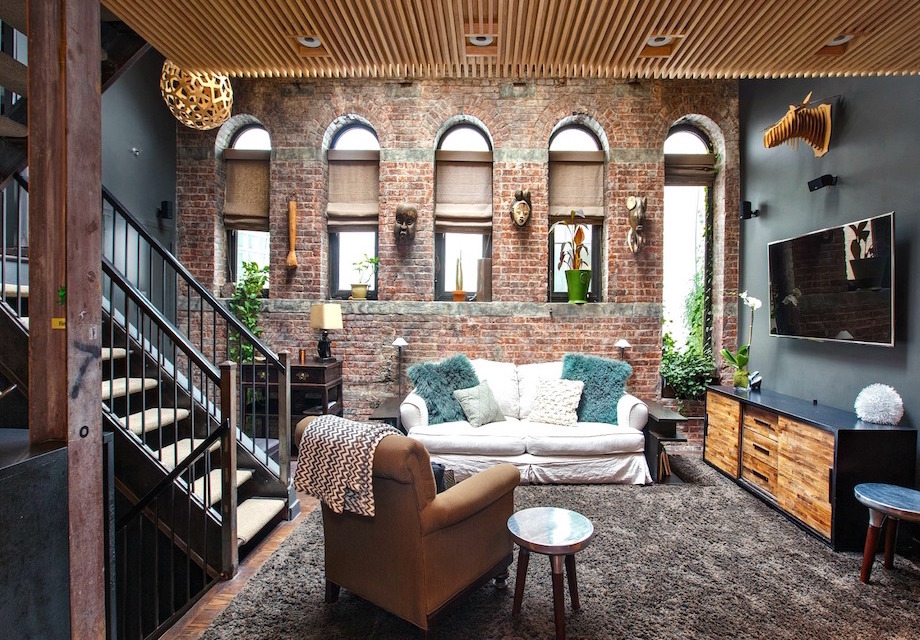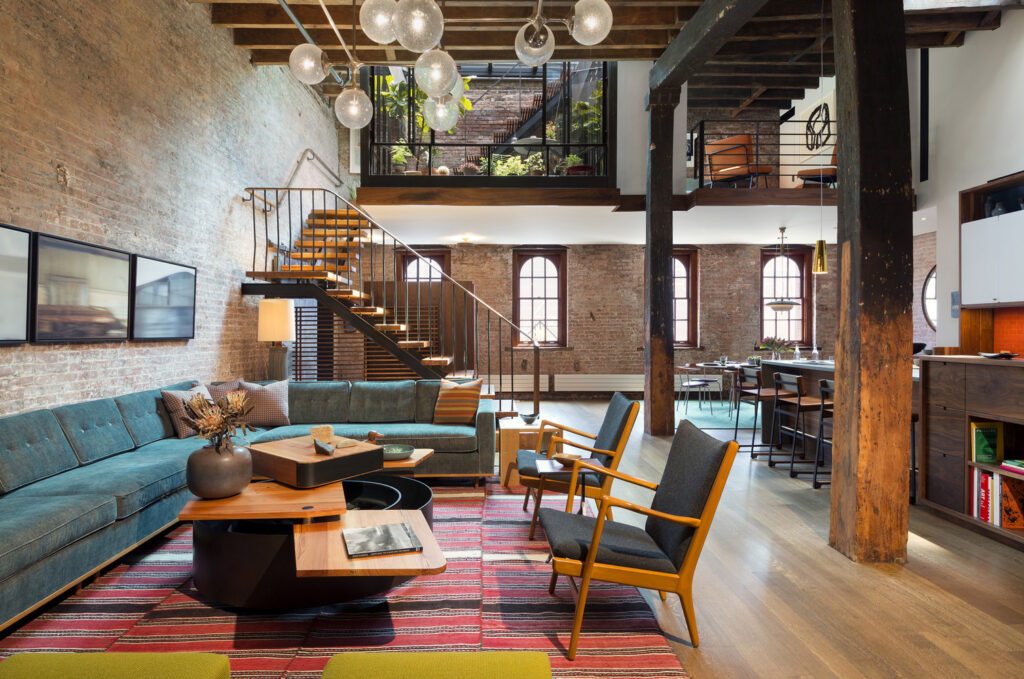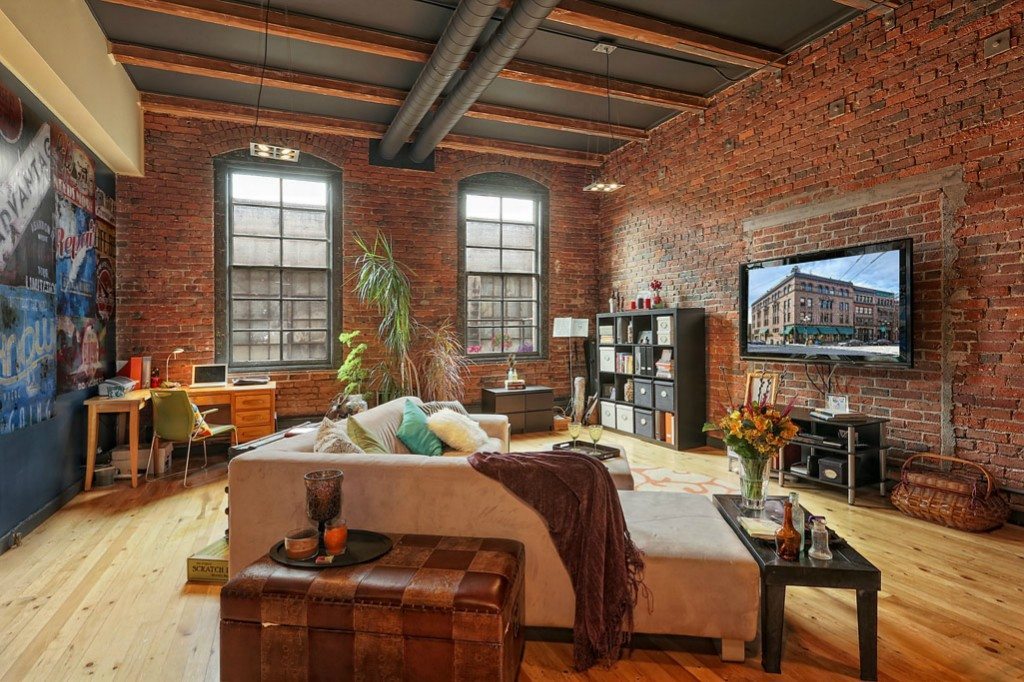The candid and bold loft style is hard to confuse with any other interior design. it is immediately recognizable among the many concepts of decorating your own apartment or house. The room is decorated in a loft style, at first glance, will resemble an abandoned factory or a workshop. If you have such a non-standard "platform" for creativity, then feel free to choose the ideas of this design to decorate it.
But this way you can immediately get lost in the variety of elements that create a loft interior. No matter how simple it may seem, it also requires scrupulousness and attention to detail.

The origin of this design dates back to the 40-50s of the 20th century. At that time, land prices in America began to rise, and therefore, gradually, all the owners of industries and various crafts moved their capacity outside the city or its environs.
Many factory and factory premises, in simple words, began to be empty. They have lost their value and direction. That is why the owners tried to sell them at least for some unfortunate means. But there were also more resourceful businessmen.
Some began to rent such places for low-income citizens. After all, who wants to live in a hangar room with bare brick walls? When all sorts of wires and pipes from the necessary communications are visible around. The new tenants and owners hurried to arrange their "apartments" and "houses" anyway. Kitchen, living room, bedroom - rooms that seem to have merged together. After all, what was once a factory and where life prevailed, did not have any partitions and additional walls inside the room.
No matter how hard you try, the old elements still reminded of the true purpose of the buildings. And in combination with the new "breath", such as home furniture, these homes looked quite interesting and original.
New York fashionistas quickly saw something new and unique in this and rushed to populate the former workshops and premises after the warehouses.
Artists, musicians and artists with all the imagination that was inherent in them lived in a large space, where there is no partition or additional wall. They did not touch the wooden trusses and beams under the ceiling. The new apartment owners did not even want to cut the sewer pipes from the utilities, and the huge factory windows were left without decorations in the form of curtains or tulle.
Artists saw in this a free, ill-considered style that has its own unique charm. In such houses, they felt free and independent of obsessive classics and rules in the arrangement of their cozy home.

After America, the crisis has caught up with European countries. As in the United States, large factories and enterprises gradually moved from the city center to the outskirts. But in Europe it was immediately thought to make them apartments and houses for ordinary city dwellers.
The American idea of converting factories and factories for housing has captured its fans on the European continent. Here the loft began to develop as a style. People gradually converted ordinary houses into industrial ones. Yes, some did not even need to buy a whole room of any workshop. Residents saw the loft all around and without reference to whether the place was once a factory.
Already on a permanent basis, the loft was established when the rich and wealthy, as well as the aristocratic elite built homes and houses from scratch. It was no longer necessary to look for an abandoned factory, because people understood the principle and began to create themselves.
The new buildings were spacious, with grand windows and no walls. Instead of hiding the communications and the pipe, they were taken outside. Even if the new owners could build them into the wall, they just didn't want to.
Minimalism in combination with the characteristic rough features of the room itself laid the foundations of the "base" of the loft.
The loft-style design is characterized not only by the presence of a large room with expressive brick walls. It also requires the right color palette, a plan for the placement of furniture, special decoration and wall decoration.
In order to ensure a successful project in the industrial style, you should follow the following principles in its planning and implementation:

Surprisingly, this style has different directions:
The design of a loft-style apartment or house has its fans and admirers around the world. He impresses with his freedom and originality. This is the case when the "difficult times" for society gave a new impetus to its development and evolution of comfort for each of us.
Examples of loft-style interior design from the design bureau "Constructive":